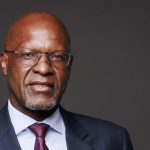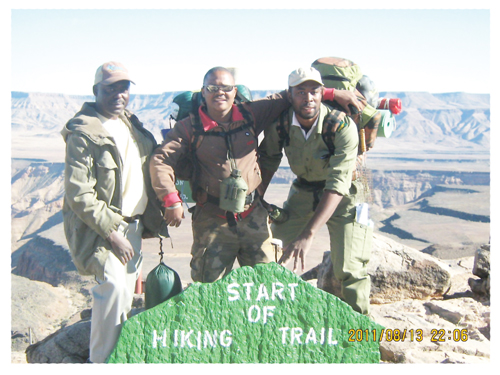
Consumers still feeling pinch despite signs of growth: – Nandago

By Adolf Kaure.
First National Bank (FNB) Namibia’s Group Economist, Ruusa Nandago said the Namibian economy is showing signs of recovery despite the restrictive environment for consumers when she shared her overview on the Namibia economic landscape during the recent Swakopmund Business Forum in Swakopmund.
According to Ruusa, Gross Domestic Product (GDP) has grown significantly for the first time since the COVID-19 pandemic.
“Over the last few quarters, we are seeing economic growth from a GDP perspective since 2015. But if you look at the size of the economy it is only during the first quarter of this year that we gained what we lost during the pandemic.”
“Right before we entered the pandemic, the size of the economy was about N$145 billion and now we are about N$146 billion, so it took us three years to recoup what has been lost,” she said.
Nandago said that despite the growth, Namibians on the ground are feeling something else.
“There is high unemployment and we see an increase in homelessness. We are actually seeing a very different environment in terms of what people are feeling on the ground, especially also with the high cost of living.”
ECONOMIC GROWTH:
The economist pointed out that the sector that is driving Namibian growth the most is mining. However, this sector does not contribute to employment at a similar rate.
“What we are seeing over the last few months is that a lot of these sector are being driven by mining. But if you look on the graph you can see that mining only makes up 2% of the overall employment of the economy.”
“We are seeing the economy growing but that growth is very concentrated in one sector which is not necessarily the largest employer. Now that is not to say that mining is not an important part of the economy. It is a very important part of the economy in terms of what it contributes to the government’s revenue, foreign direct investments and capital investments,” said Nandago.
However, the growth that is generated from the mining sector does not necessarily filter to every person on the ground, especially to those work outside the sector.
“That is probably why it is very difficult to reconcile some of the figures coming out of what we are seeing on the ground and it is also very important to put Namibian growth into context.”
CONSUMER INDEX AND INFLATION:
Another indicator of economic growth is the Namibia Statistics Agency’s consumer index, which highlights consumers’ household consumption, what households are spending in the economy.
According to this index, food makes up about 78% of total household spend.
“What we are seeing from a consumer perspective is that the consumers are not doing too well, especially in the first quarter of this year. We are seeing a negative in the first quarter of this year, which speaks to the fact that the consumer is not feeling the growth that we are seeing on the ground.”
“A lot of this is driven by the fact that there are very restricted employment opportunities at the moment,” she said.
She also highlighted the high inflation which impacts of consumer’s ability to spend, with inflation peaking at 7% last year.
“I am sure we all felt it when we went to the supermarket and that is actually the highest inflation that we have seen in five years.”
This year inflation rate has decreased slightly. Nandago explained what it means for consumers
“Something that I always like to highlight is that when inflation comes down, it doesn’t mean that prices will come down. So you are not going to see prices lowered in the shops, it just means that prices are still increasing but not as fast as we saw last year. This picture tells us the Namibian consumer is still constraint in terms of cost of living pressures.”
Inflation is expected to remain flat for the remainder of the year.
INTEREST RATE:
The economist further said that the recent interest rate hikes from the central bank have also had an impact on the consumer.
“We have seen quite high interest rate hikes from the Bank of Namibia, actually, the fourth highest we have seen since 2009.”
“That has increased the indebtedness of Namibians, putting a lot pressure when it comes to be able to pay back the debt and that by implication means putting a lot of pressure when it comes to spending in the economy,” said Nandago.
The current repo rate is 7.75%.
“We expect another interest rate hike from the Bank of Namibia and then after that we expect it to stay flat for a year or so.”
OPPORTUNITIES:
Despite the restrictive environment, there are still opportunities in the economy that the business community can tap into. According to Nandago, a rebound in tourism is expected.
“What we are seeing that really benefits the tourism industry is how many people are coming into the country – many people would extent their stay.”
“We also see an expansion in fish processing which is beneficial for job creation and local procurement.”
If the oil and gas discoveries prove to be commercially viable, they will be beneficial for the Namibian economy not only for government revenue but also for auxillary services like railway industries, engineering, property rentals and others.

A graph of Namibia’s quarterly GDP as presented by FNB Namibia’s Group Economist, Ruusa Nandago. (Photograph by Adolf Kaure)











































